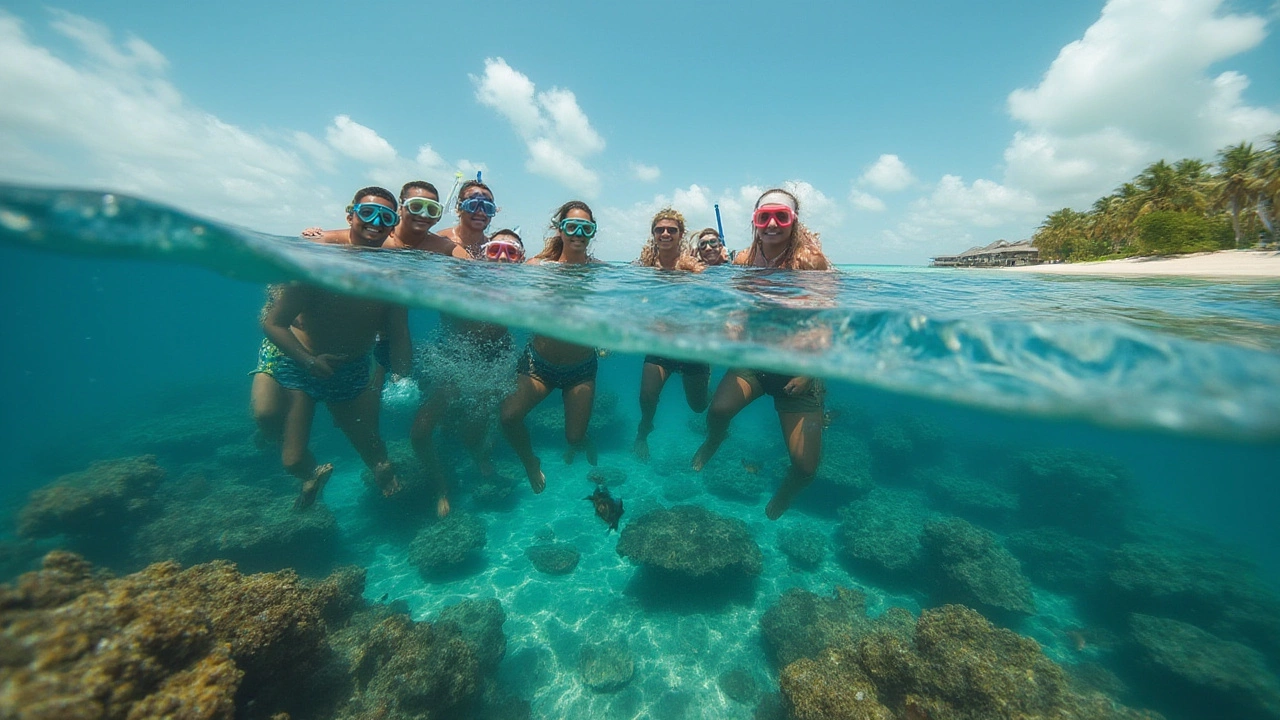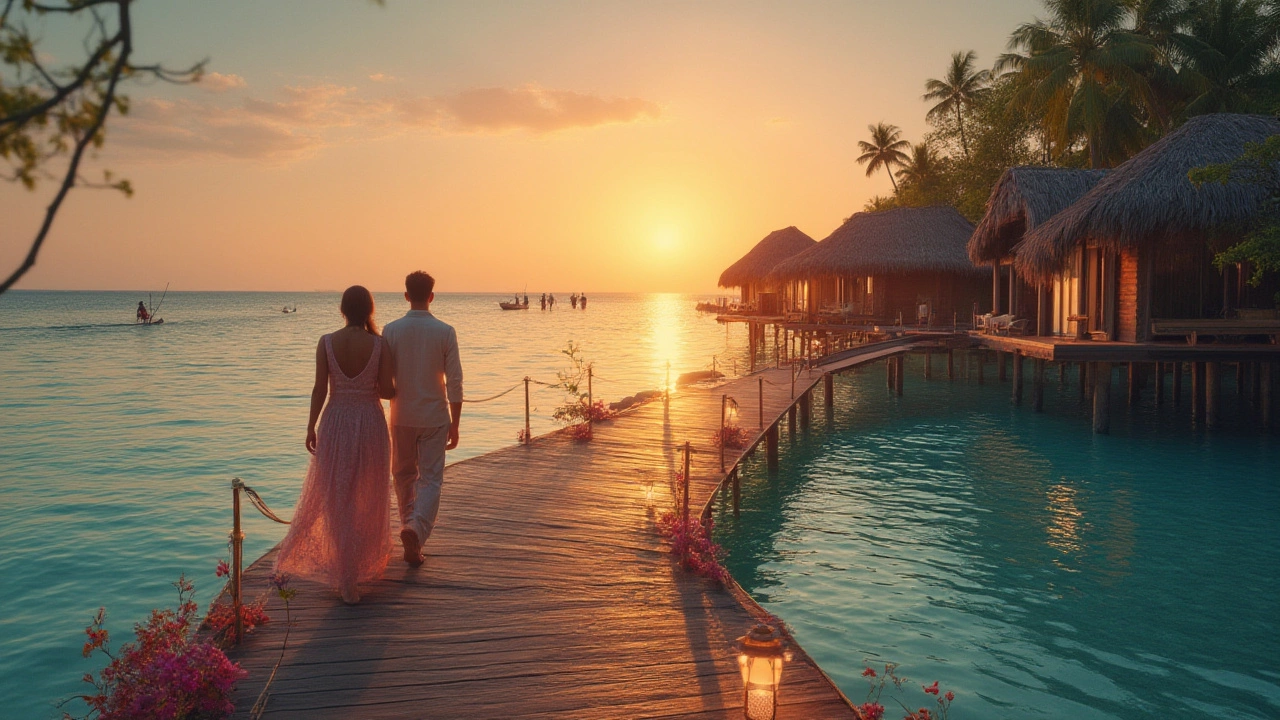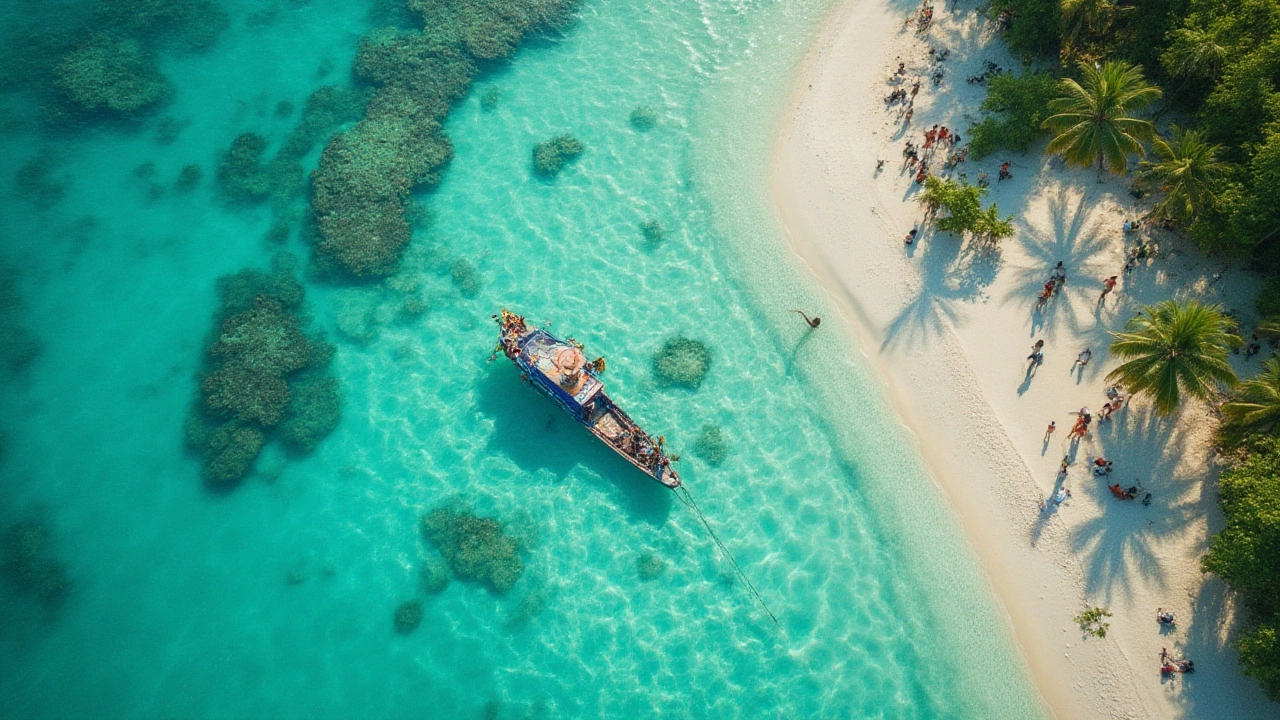Wanna escape to paradise without hopping on a long-haul flight? India’s got its own slice of the Maldives—and it’s stealing the spotlight. Picture yourself wading in crystal-clear aqua water, exploring coral reefs just steps from untouched beaches, and living in overwater villas. Sounds unreal? This is a reality in Lakshadweep, India’s best-kept tropical secret famously dubbed the 'Mini Maldives' by Instagrammers, travel buffs, and folks just wanting to ditch the crowd. Yet, ask ten people where ‘Mini Maldives’ really is, and eight will shrug or guess wrong. Let’s break it down: what makes Lakshadweep India’s answer to the Maldives, why it’s become the latest envy on travel feeds, and how you can plan a trip that gives the Maldives a run for its money—while keeping your passport’s stamp count to a minimum.
What and Where is Mini Maldives in India?
Everyone loves a good nickname, but ‘Mini Maldives’ isn’t a nickname handed out lightly. People in the know are talking about Lakshadweep: an Indian archipelago off the Kerala coast, made up of 36 dreamy islands dotted across the Arabian Sea. Only 10 of these are inhabited, and barely a handful are open to tourists—making this gem a private, exclusive hideaway most people just dream about. If you zoom in on Agatti, Kadmat, Bangaram, or Kavaratti Island, you’ll see why these names come up every time someone says ‘Mini Maldives.’
So, what turns Lakshadweep into a doppelganger for the Maldives? First, it’s the water—seriously, the lagoons are shades of turquoise that don’t need filters. The beaches aren’t overrun with hawkers or parties; instead, you get powdery white sand, palm-fringed walks, and stretches of quiet that feel a million miles from the mainland. Second, Lakshadweep sits atop some thriving coral reefs—divers and snorkelers rave about the technicolor marine life. You’ll find everything from clownfish and turtles to manta rays. In fact, Agatti and Bangaram are among the few places in India where you can spot bioluminescent plankton lighting up the shoreline like stars on the sand.
And here’s a fun fact: Maldives and Lakshadweep actually belong to the same chain of atolls. They’re geological siblings, separated by little more than borders. No wonder many resorts here echo that Maldivian villa style—think water bungalows, open-air spas, and seafood feasts right over the waves. Yet, there’s something uniquely Indian about Lakshadweep. Local culture is strong; you’ll hear Malayalam and Dhivehi, taste coconut-rich curries and spicy seafood, and see fishermen hauling in the daily catch the way it’s been done for centuries.
Since Lakshadweep is protected by special regulations, you can’t just turn up with a suitcase. Indian tourists need permits; foreign nationals face stricter limits (only Bangaram and Thinnakara allow foreign visitors). But don’t let that put you off—the red tape keeps crowds at bay and the islands pristine. According to government tourism stats, Lakshadweep gets under 50,000 tourists annually—compare that with Goa’s millions or the Maldives’ 2 million international visitors. If you crave something rare and tranquil, this is it.

Why Lakshadweep is Called 'Mini Maldives': What Makes It Special?
Start with the obvious: the scenery belongs on a postcard. Giant swathes of coral lagoon surround almost every island. The water’s so clear you’ll spot fish darting below while standing in knee-deep surf. Lakshadweep unlocks some of the finest diving and snorkeling in the Indian Ocean—Agatti and Kadmat are hot favorites, each with certified dive shops offering beginner to pro courses. Snorkeling gear is also everywhere, so you can paddle out and gaze at butterflyfish, parrotfish, or even gentle sea turtles munching sea grass. And honestly, the sunsets just crush it here—not just orange, we’re talking neon pink and lavender skies reflected on water so flat, it looks like glass.
What sets Lakshadweep apart from the original Maldives isn’t just its vibe—it’s the feeling of having the entire place to yourself. There are no mega-resorts swallowing up beaches, no chain restaurants or blaring music scenes. Resorts are small scale, family run, or eco-conscious, and your neighbor is more likely to be a coconut tree than a rowdy tourist.
Heading to Lakshadweep, you’ll notice life ticks by at a different pace. Take a bike around Agatti or stroll Kadmat’s length end to end—locals will greet you by name by day two. Stop for parotas and fish curry in a beach cafe, and don’t be shocked if the owner sits to chat about the day’s catch or the best time to spot dolphins offshore. Water sports fans will love kayaking (especially at sunset), windsurfing, glass-bottom boat rides, or even stand-up paddleboarding through glassy lagoons. Fishing trips are easy to arrange; so are island-hopping tours where you’ll land on sandbars with just your footprints for company.
Want to get deeper into the island groove? Keep an eye out for cultural events. Traditional dances, music, and festivals like Milad-un-Nabi or Eid are celebrated with passion and color. On Friday mornings, the islands’ mosques—some centuries old—fill with prayers and lively community meals. Don't be shy about sampling local sweets (maasu podichathu, a shredded fish snack, is surprisingly addictive). And for the early birds, a dawn walk along the shore brings glimpses of fishermen with handwoven nets or even dolphins jumping close by.
Worried about crowds? Don’t be. Most resorts cap guest numbers to protect the delicate environment. The government requires an entry permit for every visitor, and plastic use is tightly restricted. This is paradise—just without Instagram’s crowds clogging every shot.
| Criteria | Lakshadweep | Maldives |
|---|---|---|
| Archipelago Size | 36 islands | 1200+ islands |
| Tourist Arrivals/year | ~50,000 | 2 million+ |
| Visa/Permits | Indian permit required | Visa-on-arrival |
| Popular Activities | Snorkeling, diving, kayaking, cultural events | Diving, snorkeling, luxury resorts, fishing |
| Best Time to Visit | October–May | November–April |
This unique blend—the luxury of nature, genuine hospitality, and a feeling of timeless privacy—has positioned Lakshadweep as the Mini Maldives India won’t stop talking about. And hey, waking up to views that look straight outta a travel magazine? Hard to argue with that.

Travel Tips and Planning for India’s Mini Maldives Experience
Alright, let’s say you’re ready to hit Lakshadweep and live that ‘Mini Maldives’ life. Planning ahead is key, because this isn’t the kind of place you just wing on a long weekend. The first and most critical part: get your permit sorted. For Indian citizens, you can now apply online, usually through the Lakshadweep Administration website or with help from registered tour operators. Kids need their own permits too. Tourists from outside India are usually limited to Bangaram and Thinnakara, and there’s a lot more paperwork, so plan ahead and double-check document requirements.
Now, the only way in is via air or sea. The Agatti Airport is the lone airstrip on the islands, with flights connecting from Kochi (Cochin), Kerala. Don’t expect tons of flights—a couple per day is the max—so book as early as possible. From Agatti, you’ll reach other islands via private boats, ferries, or resort ships. If you’re the adventurous type with loads of time, try the overnight passenger ship from Kochi. Just brace for basic cabin conditions and a journey that can take up to 20 hours depending on the ferry and the sea.
So, which islands should make your shortlist?
- Agatti: Easiest access, great for first-timers, and boasts blinding blue lagoons. Good infrastructure, dive shops, and affordable stays.
- Bangaram: Once voted one of the best tropical islands in the world. Known for luxury eco-resorts, shimmering beaches, bioluminescent nights, and water villa vibes.
- Kadmat: Snorkelers and divers, this is your paradise. Half the crowd, double the coral, and a favorite for honeymooners.
- Kavaratti: The capital—offers a slice of local life, fantastic mosques, marine conservation centers, and the widest choice of tours.
Pack practically. Most higher-end resorts provide snorkeling/fishing gear, but bring reef-safe sunscreen and sturdy swimwear. Modest clothing is appreciated off the beach—Lakshadweep is conservative compared to, say, Goa. Remember, cash is handy since card payments can be spotty, especially during monsoon or network outages. Mobile coverage is improving, but don’t expect blanket Wi-Fi or 5G everywhere; this is actually a perk, not a problem.
Prime visiting months: October to May. Monsoon (June–September) means rough seas, closed ferries, and many resorts shut down. If you want to see bioluminescence, November through February tends to be your best shot. Weather is ideal, with balmy sea breeze, 28-32°C averages, and just enough humidity to feel like you’re actually in the tropics.
The experience here is more about slow travel than ticking off bucket-list spots at warp speed. You’ll have time to watch hermit crabs shuffle along the sand, savor coconut water under leaning palms, and take in sunrises that’ll reset your sleep schedule. For those who like structure, here’s a packed but balanced five-day itinerary:
- Day 1: Land at Agatti, soak in lagoon views, short cycle ride around town.
- Day 2: Snorkeling, glass-bottom boat rides, sunset kayaking.
- Day 3: Boat to Bangaram. Chill, try an island picnic, romantic candlelight dinner on the sand.
- Day 4: Morning yoga, optional scuba dive or fishing tour. Try night walks for bioluminescence.
- Day 5: Cultural tour of Kavaratti. Visit local mosques, Marine Aquarium, handicraft shops for souvenirs.
A few quick tips: don’t litter (all waste must be carried out), leave coral and shells as you found them, and ask locals before clicking portraits. If you’re aiming for full-on Maldives vibes, splurge for an overwater cottage on Bangaram—but don’t expect the bling bling of five-star Maldives resorts; this place is more rustic luxury, easy-going service, and the sort of magic that leaves you wanting ‘just one more day.’
So the secret’s out—Mini Maldives isn’t just a label. It’s a state of mind, a real-life escape, and a reminder that you don’t need to cross borders for a world-class island adventure. Next time someone drops the ‘best beaches in India’ question, you’ll know exactly where to point them—and you can do it with the grin of someone who’s really been there.
